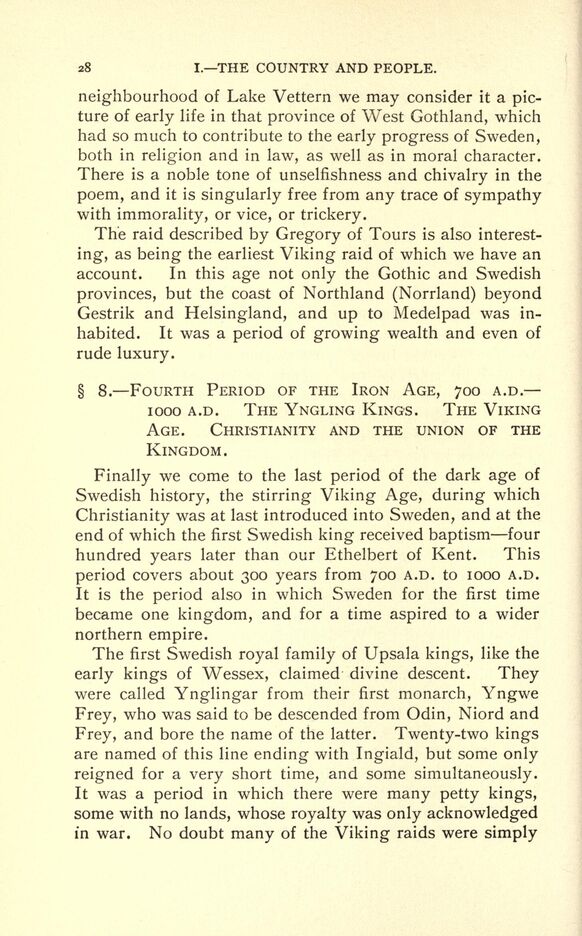
Full resolution (JPEG) - On this page / på denna sida - I. Introductory Lecture.—The Country and its Inhabitants in the Heathen Period up to 1000 A.D. - § 7. Third Period of the Iron Age - § 8. Fourth Period of the Iron Age

<< prev. page << föreg. sida << >> nästa sida >> next page >>
Below is the raw OCR text
from the above scanned image.
Do you see an error? Proofread the page now!
Här nedan syns maskintolkade texten från faksimilbilden ovan.
Ser du något fel? Korrekturläs sidan nu!
This page has never been proofread. / Denna sida har aldrig korrekturlästs.
28 I. THE COUNTRY AND PEOPLE.
neighbourhood of Lake Vettern we may consider it a pic
ture of early life in that province of West Gothland, which
had so much to contribute to the early progress of Sweden,
both in religion and in law, as well as in moral character.
There is a noble tone of unselfishness and chivalry in the
poem, and it is singularly free from any trace of sympathy
with immorality, or vice, or trickery.
The raid described by Gregory of Tours is also interest
ing, as being the earliest Viking raid of which we have an
account. In this age not only the Gothic and Swedish
provinces, but the coast of Northland (Norrland) beyond
Gestrik and Helsingland, and up to Medelpad was in
habited. It was a period of growing wealth and even of
rude luxury.
8. FOURTH PERIOD OF THE IRON AGE, 700 A.D.
1000 A.D. THE YNGLING KINGS. THE VIKING
AGE. CHRISTIANITY AND THE UNION OF THE
KINGDOM.
Finally we come to the last period of the dark age of
Swedish history, the stirring Viking Age, during which
Christianity was at last introduced into Sweden, and at the
end of which the first Swedish king received baptism four
hundred years later than our Ethelbert of Kent. This
period covers about 300 years from 700 A.D. to 1000 A.D.
It is the period also in which Sweden for the first time
became one kingdom, and for a time aspired to a wider
northern empire.
The first Swedish royal family of Upsala kings, like the
early kings of Wessex, claimed divine descent. They
were called Ynglingar from their first monarch, Yngwe
Frey, who was said to be descended from Odin, Niord and
Frey, and bore the name of the latter. Twenty-two kings
are named of this line ending with Ingiald, but some only
reigned for a very short time, and some simultaneously.
It was a period in which there were many petty kings,
some with no lands, whose royalty was only acknowledged
in war. No doubt many of the Viking raids were simply
<< prev. page << föreg. sida << >> nästa sida >> next page >>